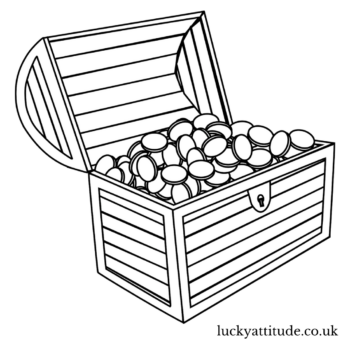Investing In Silver: DOs And DONTs

Curious about investing in silver?
Good!
Investing in precious metals is a great way to diversify your portfolio, provide stability, and hedge against inflation.
In this blog post, we’ll go through the DOs and DONTs of silver investing.
Introduction to silver investing
Silver is a precious metal that has been used as a store of value and a medium of exchange for centuries.
Silver investing involves purchasing silver as an investment with the expectation of earning a return on that investment over time.
It is popular among investors due to its potential as a hedge against inflation, its industrial applications, and its historical role as a safe haven asset.
When it comes to purchasing silver, there are numerous benefits that make it a smart investment choice.
First and foremost, silver is a tangible asset that has been valued for centuries. Unlike paper investments, such as stocks and bonds, silver investment allows you to own a physical asset that can be held and stored. Additionally, silver has proven to be a great hedge against inflation and economic uncertainty.
By diversifying your investment portfolio with silver, you are able to protect your wealth from the effects of a changing economy. As the demand for silver continues to grow, it’s clear that investing in this timeless asset is a smart move for anyone looking to increase their financial security.
Silver investing DOs:
1. Do your general industry research
Before investing in silver, educate yourself about the market, historical price trends, and factors that influence silver prices.
Understanding the fundamentals can help you make informed decisions.
It’s also important to familiarize yourself with current market trends and fluctuations to make an informed decision.
2. Do understand the different types of silver investing
Take the time to educate yourself on the different forms of silver investments, such as:
1. Physical silver: coins, bars, or other physical forms of metal. Physical silver offers tangible ownership and can be stored at home or in a secure location. However, it requires careful storage and may involve additional costs, such as insurance and security measures.
2. Silver Exchange-Traded Funds (ETFs): These funds are traded on stock exchanges, allowing investors to gain exposure to silver without physically owning the metal. ETFs provide liquidity, easy tradability, and diversification benefits. They may also have lower costs compared to owning physical silver.
3. Silver mining stocks: this involves buying shares of companies engaged in silver mining and exploration. The value of these stocks is influenced by factors such as silver prices, mining costs, production volumes, and company-specific factors.
4. Silver futures/options: these are derivatives that allow investors to speculate on the future price of silver. Futures contracts provide the obligation to buy or sell silver at a predetermined price and date, while options provide the right but not the obligation to do so. Trading in futures and options requires knowledge of derivatives markets and can be more complex and risky compared to other forms of silver investing.
5. Silver bullion funds: these are vehicles that hold physical silver on behalf of investors. These funds pool investors’ money to purchase and store silver bars or coins. Silver bullion funds offer convenience and cost-effective exposure to silver, as they handle storage and security on behalf of investors. However, fees and expenses associated with these funds should be considered.
6. Silver certificates: these are paper or digital certificates that represent ownership of silver without physically owning or storing the metal. These certificates are typically issued by banks or other financial institutions. They provide a convenient way to invest in silver without the need for physical storage.
Take the time to educate yourself on the different forms of silver investments, and consider factors such as purity, weight, and storage options.
Be sure to take into account the costs associated with buying and selling, fees, storage, insurance, taxes, and other details related to the type of investments you are considering.
3. Do understand your risk tolerance level
A risk tolerance test is a tool used to assess an individual’s willingness and ability to take on financial risk when making investment decisions. The purpose of such a test is to help investors gain a better understanding of their comfort level with risk and to align their investment choices with their risk tolerance.
A typical risk tolerance test consists of a series of questions or scenarios that measure an individual’s attitudes, preferences, and financial circumstances related to risk. These questions may cover topics such as investment goals, time horizon, financial obligations, income stability, and reaction to market fluctuations.
The test aims to categorize investors into different risk profiles, such as conservative, moderate, or aggressive, based on their responses.
These risk profiles can guide individuals in selecting investment strategies and asset allocations that align with their risk tolerance.
While risk tolerance tests can be helpful, it is advisable to consult with a financial advisor or investment professional who can provide personalized guidance based on your risk tolerance, financial goals, and investment knowledge.
4. Do consider your investment goals
Determine why you want to invest in silver. Are you looking for a long-term hedge against inflation, diversification, or short-term price speculation?
Your goal can also be saving for retirement, funding a child’s education, or purchasing a house.
Your goals will influence the type of silver investment you choose.
There are several ways to invest in silver, including buying physical silver (coins, bars), investing in silver ETFs (Exchange-Traded Funds), or purchasing shares of silver mining companies. Evaluate each option based on your preferences and risk tolerance.
5. Do take advantage of countercyclical economics
When investing in precious metals, remember that these investments are “countercyclical,” meaning when stock prices go down, precious metals go up.
Traditional stock investments increase holdings when businesses are booming and sell when they begin to decline. Not so with precious metals.
Precious metals like silver and gold, on the other hand, thrive in times of economic downturn and inflation.
When stocks turn downward, investors want to get out of securities and move part of their money to more stable sources of funding.
Silver investing DONTs:
1. Don’t expect big returns
Silver is a relatively cheap metal and not an amazing earner. Silver is primarily a safeguard investment. For appreciable returns, it doesn’t perform as well as real estate and other investments.
2. Don’t invest more than you can afford
As with any investment, it’s essential to only invest money you can afford to lose. While silver can be a valuable investment, it also carries risks, including price volatility.
3. Don’t invest in numismatic silver
“Numismatic” refers to coins that have value beyond their metal contents because they’re historic or collectible.
The numismatic silver is brimming with scammers. Precious metals investors can avoid all of this by simply avoiding numismatic coins.
4. Don’t overlook storage and security
If you choose to invest in physical silver, consider storage and security. Ensure you have a safe and secure location to store your silver investments.
5. Don’t let emotions drive decisions
Avoid making impulsive investment decisions based on short-term market fluctuations or emotional reactions. Stick to your investment strategy and make decisions based on careful analysis and research.



